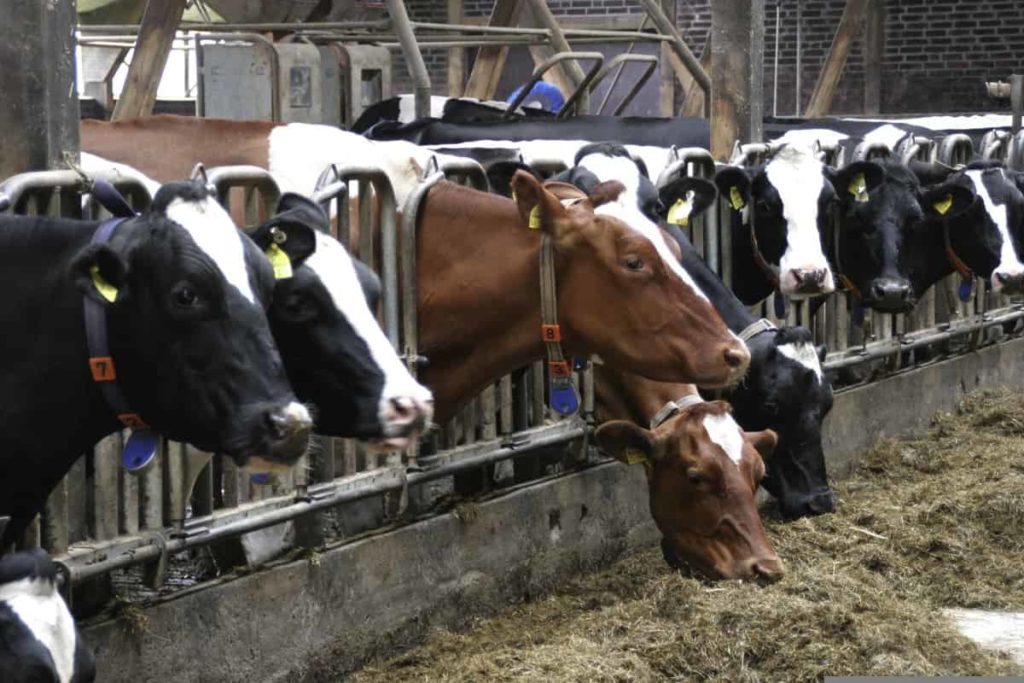Flood Preparedness For Livestock Farmers: A Comprehensive Guide

Table of Contents
Assessing Your Risk
Understanding your farm's vulnerability to flooding is the first crucial step. This involves identifying flood zones and reviewing historical flood data.
Identifying Flood Zones and Historical Data
Leveraging readily available online resources is key. Utilize online mapping tools such as FEMA's Flood Map Service Center to determine if your farm lies within a designated flood plain. These maps illustrate areas with varying degrees of flood risk, offering valuable insights into potential flood depths and frequencies. Don't stop there! Investigate historical flood events in your specific region. Local government websites, historical archives, and agricultural extension services often hold detailed records of past floods, including their severity, duration, and impact. This historical data paints a more complete picture of your risk, allowing you to anticipate potential challenges more effectively.
- Utilize online mapping tools like FEMA's Flood Map Service Center to identify flood plains.
- Research historical flood events in your region through local government websites and archives.
- Consider microclimates and local topography (e.g., low-lying areas, proximity to rivers or streams) that may exacerbate flood risk.
- Consult with your local agricultural extension services or emergency management agencies for expert advice and regional-specific insights.
Developing a Flood Response Plan
A well-defined flood response plan is your lifeline during an emergency. This plan needs to address livestock evacuation, farm security, and emergency resource management.
Creating an Evacuation Plan
Developing a detailed evacuation plan for your livestock is paramount. The specifics will depend on the type of animals you raise; cows require different handling than pigs or sheep. Consider the following:
- Establish clearly marked evacuation routes and pre-determined safe locations for your animals, ideally on higher ground.
- Prepare temporary housing or shelters for livestock, ensuring they are secure and provide adequate protection from the elements.
- Identify reliable transportation options—trailers, trucks, or other suitable vehicles—and ensure they are in good working order and readily available.
- Assign specific personnel responsible for different aspects of the evacuation process, including animal handling, transportation, and shelter setup.
- Regularly practice your evacuation plan to ensure its effectiveness and to familiarize your team with procedures.
Securing Your Farm
Beyond evacuation, securing your farm against flood damage is crucial. This involves proactive measures to protect your structures, supplies, and resources.
- Elevate feed storage, essential equipment, and valuable supplies above potential flood levels.
- Reinforce fences and other structures to withstand floodwaters, preventing animal escapes and minimizing property damage.
- Protect your water sources (wells, tanks) from contamination by securing them and implementing measures to prevent flooding.
- Secure hazardous materials and chemicals to prevent environmental contamination and ensure worker safety.
Protecting Your Livestock During a Flood
Once a flood hits, your focus shifts to ensuring your livestock's immediate safety and well-being.
Emergency Feeding and Watering
Maintaining access to adequate feed and water is critical during and after a flood. Preparation is key.
- Store ample feed and water supplies in a safe, elevated location, accessible even during high water levels.
- Have a plan for accessing emergency water sources, such as a backup well or a pre-arranged water delivery system.
- Consider investing in portable water tanks and troughs for easy relocation during an emergency.
Animal Health and Disease Prevention
Floods create ideal conditions for disease outbreaks. Proactive measures are vital.
- Keep your livestock's vaccination records up-to-date and consult your veterinarian regularly.
- Have your veterinarian's contact information readily available for immediate assistance if needed.
- Learn to recognize signs of stress and illness in your livestock, enabling prompt intervention.
- Thoroughly sanitize affected areas after the flood to prevent disease outbreaks.
Post-Flood Recovery
After the floodwaters recede, the focus shifts to recovery and rebuilding.
Assessing Damage and Seeking Assistance
Documenting damage is crucial for insurance claims and accessing government aid.
- Document flood damage thoroughly with photos and videos, noting specifics for insurance claims.
- Contact your insurance provider immediately to report the damage and initiate the claims process.
- Apply for federal and state disaster assistance programs as soon as possible to secure financial aid for recovery efforts.
- Seek guidance from agricultural agencies and local government resources on available support programs and recovery strategies.
Cleaning and Sanitation
Thorough cleaning and sanitation are vital to prevent disease and ensure long-term farm health.
- Remove flood debris and contaminated materials carefully, prioritizing safety.
- Clean and disinfect barns, pastures, and all equipment thoroughly, using appropriate disinfectants.
- Test water sources for contamination before resuming their use to ensure the safety of your livestock and workers.
Conclusion
Effective Flood Preparedness for Livestock Farmers is not just about reacting to a crisis; it's about proactively mitigating risks and safeguarding your livelihood. By assessing your risk, developing a comprehensive response plan, protecting your livestock during a flood, and establishing a robust recovery strategy, you significantly improve your chances of minimizing losses and ensuring the continued health and well-being of your animals. Don't wait for a flood to strike. Take action today to create a thorough flood preparedness plan, improve your flood preparedness, and enhance your livestock flood plan to ensure your farm's flood resilience. Utilize the resources provided by your local agricultural extension service and FEMA to get started. Remember, proactive planning is the key to protecting your farm and your future.

Featured Posts
-
 The Karate Kid Part Ii Exploring The Cultural Clash And Personal Growth
May 07, 2025
The Karate Kid Part Ii Exploring The Cultural Clash And Personal Growth
May 07, 2025 -
 Investing In Middle Management A Strategy For Improved Employee Performance And Business Outcomes
May 07, 2025
Investing In Middle Management A Strategy For Improved Employee Performance And Business Outcomes
May 07, 2025 -
 Broadcoms Proposed V Mware Price Hike A 1050 Increase At And T Reports
May 07, 2025
Broadcoms Proposed V Mware Price Hike A 1050 Increase At And T Reports
May 07, 2025 -
 Savage X Fentys New Bridal Collection Inspired By Rihanna
May 07, 2025
Savage X Fentys New Bridal Collection Inspired By Rihanna
May 07, 2025 -
 Who Wants To Be A Millionaire Celebrity Special A Deep Dive
May 07, 2025
Who Wants To Be A Millionaire Celebrity Special A Deep Dive
May 07, 2025
